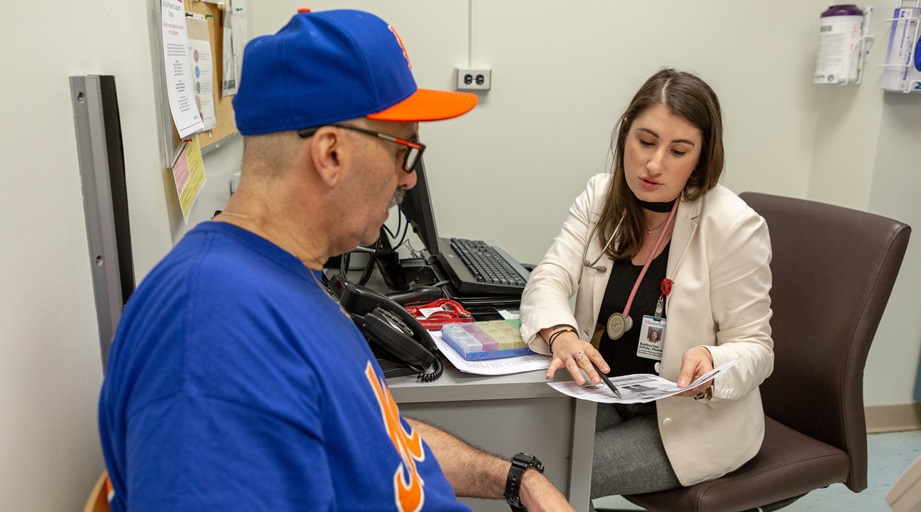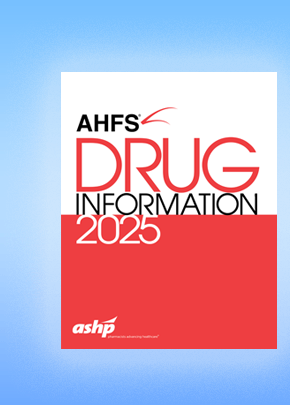
In a perfect world, health systems would have complete visibility into enterprise-level data on medication utilization, inventory, and procurement to minimize the impact of drug shortages on their organization and their patients.
That ideal is neither possible nor practical for most — but that’s fine, said the presenters of No Shortage of Data: Using Analytics to Support Drug Shortage Management, held Dec. 10 at the ASHP Midyear Clinical Meeting and Exhibition. With a little ingenuity and a lot of collaboration, pharmacy teams can use readily available data to support actionable decision-making across health systems.
In this case study-style session, speakers Killian Rodgers and Evan W. Colmenares shared how their pharmacy analytics team has managed recent drug shortages at UNC Health’s 20 campuses across North Carolina.
Pointing to the ASHP Guidelines on Managing Drug Shortages, Rodgers noted that data analytics can have a role at many points throughout the shortage mitigation process, such as operational and therapeutic assessments, impact analysis, and communication plans. When drug shortages occur, stakeholders turn to the UNC Health pharmacy analytics team with questions such as “How long until we run out of this medication?” “What alternative therapies should physicians order instead?” and “Do we need to postpone surgeries and other procedures?”
Gathering the necessary data to answer those questions poses its own challenges. The numbers may be spread across multiple software systems and formats. If the health system has a decentralized medication storage model, that affects the ability to discern quantities on hand.
As one example, a recent shortage of local anesthetics was complicated because clinics could purchase the medication from UNC Health’s central warehouse or maintain individual accounts with wholesalers. The pharmacy analytics team addressed this problem by comparing purchasing invoices from the primary wholesaler against utilization rates from the electronic medical records.
Multi-dose products also can add complexity to usage calculations because dosing varies from patient to patient — and opened vials are only useful to the original practice site. “If I had a multi-dose vial in the mountains of North Carolina, I couldn't use the rest of that dose to treat someone in Raleigh four hours away,” Colmenares, system manager for analytics and technology pharmacy services, gave as an example. For this reason, the team tries to be conservative with its inventory forecasts.
Rodgers, a pharmacist coordinator, emphasized data quality over quantity, even if it means asking teams to count their inventory and usage manually. “Garbage in, garbage out. … No amount of analytics wizardry or even AI can fix garbage data going into your model or your reporting,” he advised.
Rodgers and Colmenares gave Midyear attendees a glimpse into the custom reports they have devised to help manage critical drug shortages at UNC Health. The interactive dashboards allow healthcare providers and executive leaders to see how much of a drug is on hand, seven-day usage rates, longitudinal patterns, and more. Color coding provides visual cues as to the degree of a shortage’s severity, while information about individual practice sites can help users drill down to potential areas for improvement.
Coupled with communications to frontline staff, these analytics tools have helped UNC Health make impactful decisions right away to weather drug shortages — including the shortage of large volume fluids caused this past fall by Hurricane Helene, which wreaked havoc on the western part of the state.
At first, UNC Health assumed the Hurricane Helene drug shortage would mimic that of Hurricane Maria, which impacted a manufacturer of small IV fluid bags. However, managing a shortage of large-volume fluids posed unique challenges, as the pharmacy, nursing, and surgery teams all sourced and used the products differently. What’s more, the pharmacy department relied on different terminology and had a different perspective than the materials department responsible for managing the health system’s supply chain.
The pharmacy analytics teams had to quickly piece together the available data and get on the same page with their colleagues. The solution included determining system-wide allocation targets, urging pharmacists to use the smallest-sized fluid bags possible for compounding and other tasks, and pursuing alternative products, such as frozen or remixed vancomycin.
As a result, UNC Health was able to get its large-volume fluid utilization rate down to where it needed to be. The health system recognized the practice sites that met their usage goals with silver and gold medals on the dashboard — a simple but well-received gesture.
Rodgers and Colmenares imparted several lessons that pharmacists can apply to drug shortage management. For one, it is important to balance the sense of urgency with the need for data accuracy. When patient care is at stake and leaders need information yesterday, the fastest option is often the best option. “Something is better than nothing. Every day that you wait to get an asset into someone’s hand is more drug that you could potentially use than you needed to use,” Colmenares said.
Second, request the input you need, but not so often that it creates fatigue among frontline teams. Also, be open to the possibility that data analytics may dispel your assumptions about how a drug shortage is affecting your organization and the best solutions for managing the shortage.
As drug shortages remain a constant in healthcare, pharmacy teams have the opportunity to lead with data and recommend high-value mitigation strategies.
“We haven't solved the problem of shortages. But [data analytics] does allow us … to be a little bit more nimble,” Colmenares added. “We learn something from every new shortage.”








